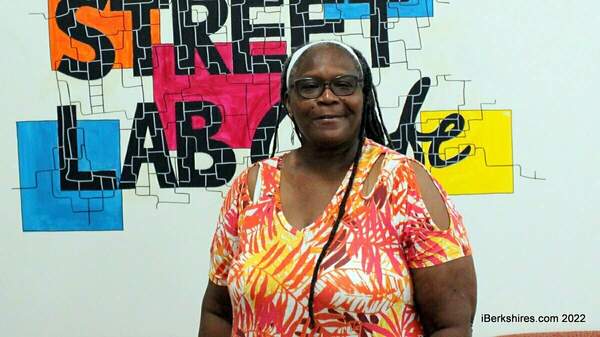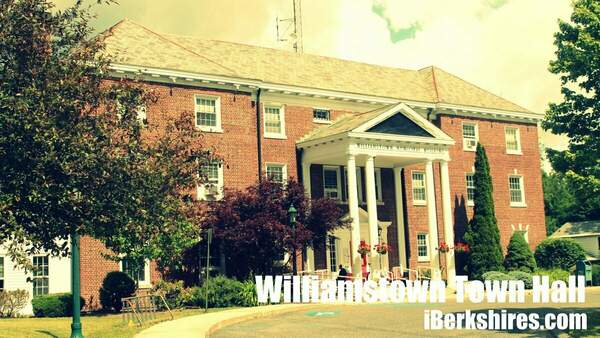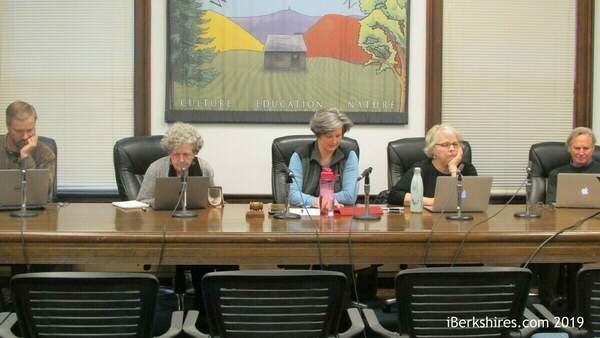Clark Art Adding Infrastructure, Economic Impact
|
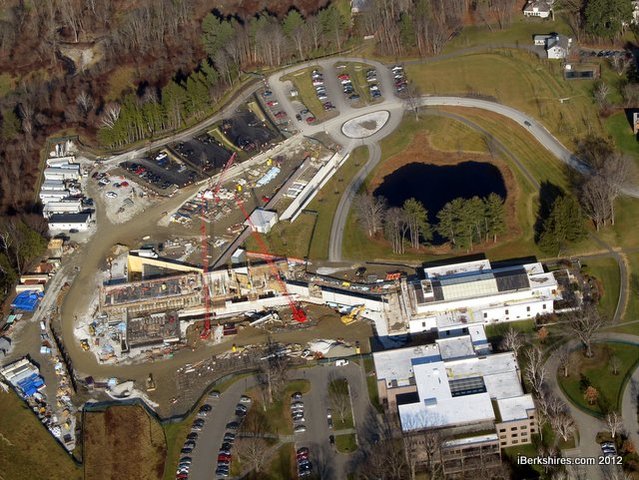
The massive construction at the Clark Art Institute has added more the 500 construction jobs to the region, just one of the economic impacts detailed by a new report.
|
WILLIAMSTOWN, Mass. — The newest addition to the Sterling and Francine Clark Art Institute will take years to build.
So will the cultural economy that area arts institutions like the Clark want to build in Berkshire County.
But Phase II of the Clark's expansion has a role to play in that cultural economy. And the South Street institution will trumpet that role Friday with the release of an
economic impact study prepared for the Clark by Boston's Economic Development Research Group.
A
decade-old report found that some $20 million is spent in the region by visitors to the museum. The new expansion is expected to draw at least 28,000 more visitors and an additional $6 million to $12 million a year in spending.
On Wednesday, Clark Director Michael Conforti discussed the expansion, the report and the region's efforts to use its natural beauty and rich cultural heritage for economic development.
He acknowledged that the fruits of those efforts sometimes seem slow to ripen.
"I think one of the factors that is anxiety-producing for people is how long it takes," Conforti said. "Life is short. People want things to happen in quarters or years.
"I know there will be significant and appropriate growth in the Berkshires as we look into the future. We just are going to have to have a Berkshire-style patience as we wait for what, indeed, has happened in Great Barrington. Great Barrington now is not what it was 10 or 15 years ago. Pittsfield is beginning to change. North Adams is a bit more of a challenge, but it certainly is changing, and we have to work with Mass MoCA and all of the organizations to see that North Berkshire is addressed.
"There may be frustration in the timing of that growth, how long it will take. ... But all of these factors, including our expansion, will contribute to the change we are both seeing but also want to see realized to a larger degree. That just may take a bit more time."
The
three-year construction project that began in 2011 already boosts the region's economy with short-term benefits to the tune of 523 new construction-related jobs, including 86 jobs in Berkshire County, generating $4.8 million in labor income in the county.
But the long-term benefits of the ambitious project really excite Conforti.
When Phase II ends in 2014, the Clark will have renovated its original building and Manton Research Center and added a brand-new Visitor, Exhibition and Conference Center designed by Pritzker Prize-winning architect Tadao Ando, the man behind the Clark's
Stone Hill Center, which opened in 2008.
"With the enhanced facilities in our two existing buildings, whose renovation is being designed by New York architect Annabelle Seldorf, there's increased gallery space and enhanced gallery space as we renovate the original white building, there is increased gallery space, library space and public amenity space in the Manton Research Center," he said. "And then in the Ando building ... it's not only the enlarged special exhibition galleries but more than one retail facility as well as a dining facility that will make people want to linger and stay longer.
"Eating and shopping, walking no the 140-acre campus with wonderful views, combined with the permanent collection that is so popular because of its concentration on Impressionism, combined with the special exhibitions we'll do in that building and continue to do up in Stone Hill ... All that means there will be added impact in terms of the tourist population in the region."
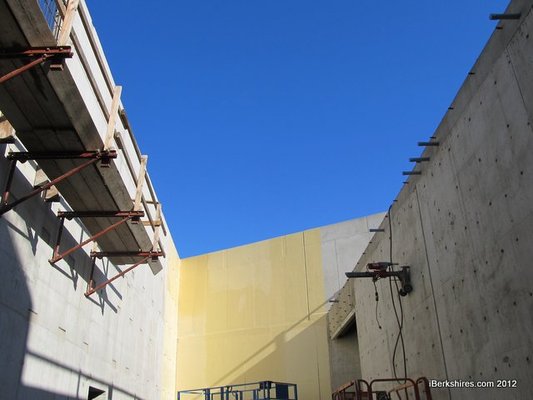 |
|
By the numbers
► Total labor income for construction: $33.6 million
► Expected annual local and state revenue: $529,000 a year
► Some 75 percent of new economic impacts would be felt in North County
|
|
The Clark already lays claim to being Berkshire County's second-largest cultural attraction — after Tanglewood — with about 200,000 visitors to the art museum each year.
The additional infrastructure from Phase II (Stone Hill was Phase I) will make the Clark more attractive for visitors and more competitive for special exhibitions — that will draw even more visitors.
The Clark already uses one piece of new infrastructure that aids in the latter regard: a new loading dock below grade that will be hidden from view when the sleek visitors center is completed.
"Our back-of-house facilities were built in 1955," Conforti said. "They didn't meet the modern-day standards of humidity control and security. And many institutions were anxious about lending to us. We needed to do this in order to operate in the world of large-scale traveling exhibitions."
During Phase II, the Clark has been operating in that world as a source of exhibitions.
Many works from the museum's permanent collection were sent on the road while the original 1955 building is being renovated. "Once Upon a Time ... Impressionism: Paintings from the Clark" is currently at the Montreal Museum of Fine Arts and moves on to Japan next month.
Conforti said the tour, which has stopped in Italy, France, Spain, London and Fort Worth, Texas, is more than a way to utilize the art during the renovation; it promotes the Clark and Berkshire brands.
"The impact of this presentation ... will result in greater consciousness not only of the Clark but of the Berkshires in general," he said. "And as we grow cultural tourism in the region, particularly as it relates to the very high percentage of foreign tourists who are in New York and potentially could be a market for us as they look outside New York for a weekend and associated opportunities.
"We will be positioned to capture those people because of the greater awareness and because of the specialness of what we're building."
How many people? That remains to be seen.
For purposes of the economic impact study, the Clark used a projection of 10 to 20 percent more visitors each year, figures that Conforti calls conservative. But he has good reason.
"The reality is, if a building like this with this level of expense were to open in New York or Cleveland or Denver or Portland, Ore., you're opening a new building in the context of a concentration of 2-to-8 million people," Conforti said. "All of those people are potentially afternoon visitors for you. The reality of the Berkshires is that we have 135,000 people who live within an hour's drive of the Clark."
So rather than use other major museum expansions as points of reference, Conforti based the 10 to 20 percent increase on the Clark's history.
"For example, when we do an exhibition of Impressionism, we can usually expect 20 percent more people," he said. "So I'm actually translating that — a really known thing — into our building but not assuming it's going to have any more impact than the most popular of exhibitions."
But even that rise in Clark visitorship would impact the local economy.
For starters, the Clark itself will need to increase its payroll by nearly $1 million per year to operate its expanded facilities. More significantly, the added visitors would add $6.6 million more to the local economy in an average year or $11.6 million in a "peak" year (such as 2014, the year Phase II opens).
Most of that money will be spent directly in the hospitality industry, but the entire economy stands to benefit, according to the EDRG economic impact study.
"The types of businesses in the county expected to 'do more business' and support more jobs are typically tied to the pattern of purchases visitors make," EDRG's report reads. "However, there are a few industries ... that reflect background household purchases driven by income created from the initial visitor stimulus (e.g. health care services and real estate activity)."
While all that economic activity seems theoretical in 2012, Conforti for one is certain the Clark will entice visitors more than ever starting in the summer of 2014.
"People will want to come here not only because of the larger-scale shows but because we'll have a campus that is enhanced with a new building by one of the most famous architects in the world," he said. "He's doing an extraordinary job as he builds this building — a building that actually embraces and addresses the 140-acre landscape we have and makes that part of the visitor experience."
Tags: Clark Art, creative economy, cultural economy, economic development, economic report,






